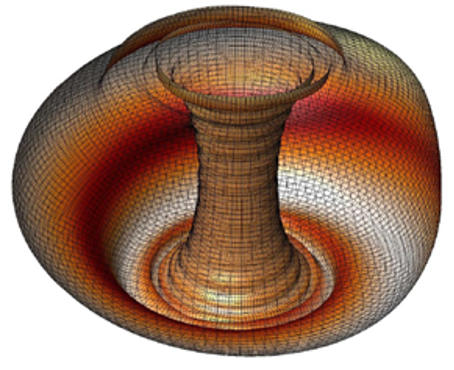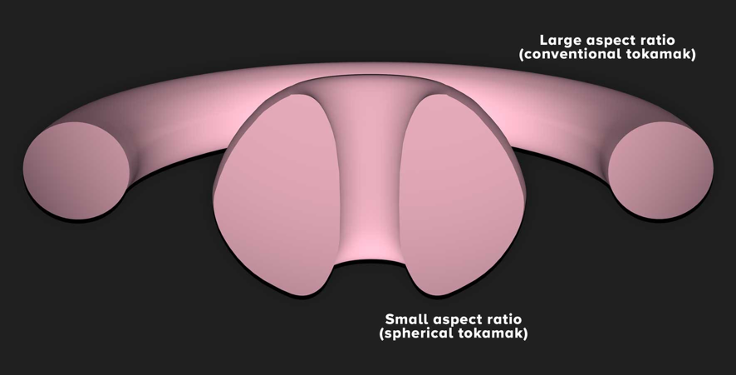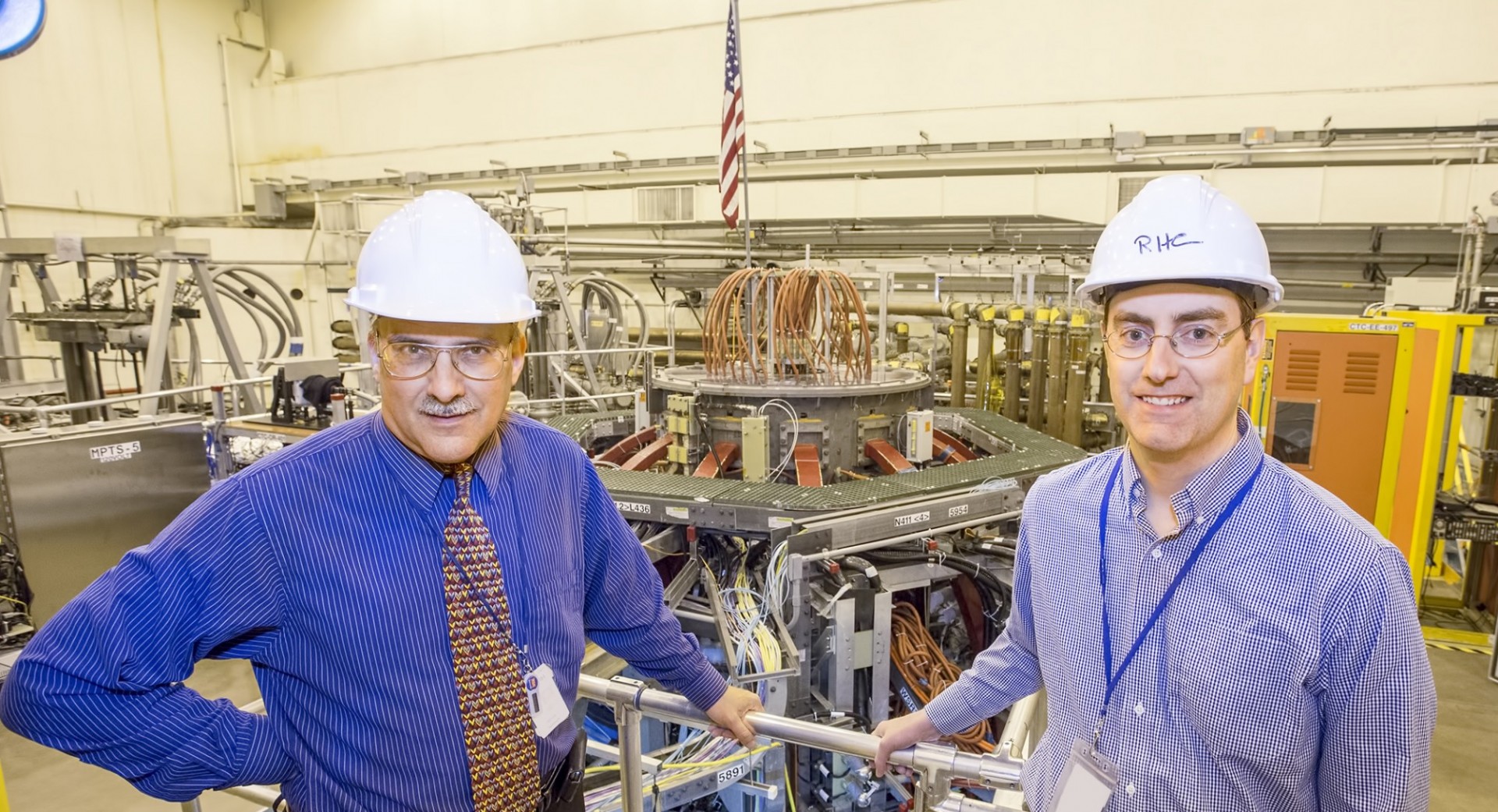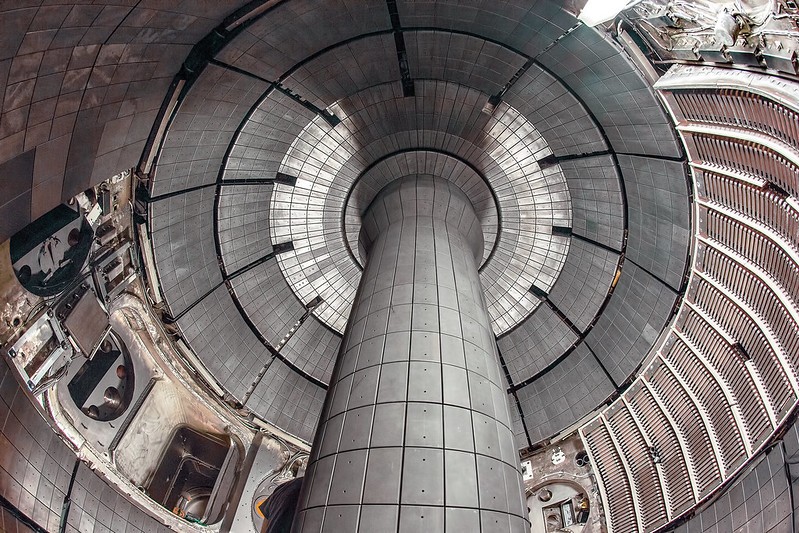Spherical tokamaks are compact high-pressure fusion devices. Understanding their states of equilibrium and how stable they are is key for future energy production.
Image Carousel with 4 slides
A carousel is a rotating set of images. Use the previous and next buttons to change the displayed slide
-
Slide 1: Example of an instability in a spherical tokamak
-
Slide 2: Spherical and conventional tokamaks compared
-
Slide 3: Columbia researchers Sabbagh and Berkery in front of the NSTX-U facility
-
Slide 4: Interior of NSTX-U, where this research is conducted.

Example of an instability in a spherical tokamak

Spherical and conventional tokamaks compared

Columbia researchers Sabbagh and Berkery in front of the NSTX-U facility

Interior of NSTX-U, where this research is conducted.
Spherical tokamak plasma confinement devices utilize magnetic fields to contain high pressure plasmas for fusion energy in a compact geometry more similar to a cored apple than the donut shape of a traditional tokamak. The plasma creates a component of its own confining magnetic field by carrying a large toroidal current. If the current is disrupted, a loss of plasma confinement results, which can lead to large heat deposition and electromagnetic forces on the surrounding structures. Research in this area is focused on diagnosing the stable equilibrium states of balance between the pressure of the high-temperature plasma pushing outwards and the magnetic pressure acting to keep the plasma contained.
Stability of Spherical Tokamaks
Research in stability of spherical tokamaks focuses on diagnosing the stable states of equilibrium of fusion plasmas in these devices and understanding the limits of the stability of those states.
Spherical tokamaks contain high-pressure, high-temperature plasmas using magnetic fields. Because of the extreme state of the plasma no material probes can be inserted to diagnose it’s conditions. Therefore the first step to understanding and analyzing these fusion plasmas is to recreate their equilibrium states using external diagnostics, such as magnetic field probes and laser temperature measurements, with complex computer codes.
Secondly, not all states of the plasma are stable; imbalances between the confining magnetic field and the plasma pressure can lead to explosive instabilities. Fusion scientists previously thought that making the plasma rotate would stabilize the plasma, but our research group discovered that there is a more complicated connection between rotation and stability. Some plasmas can become unstable when they rotate too fast, while others can maintain stability at lower rotation rates. When plasma rotation is kept in a favorable range, the charged plasma particles bouncing back and forth in the magnetic field can actually steal some of the energy from the rotational motion, which helps stabilize the plasma. A similar stability condition applies to the frequency with which particles collide and bounce off one another, a property termed their collisionality. Our research group has found that reduced collisionality, as will be found in future fusion plasmas, does not necessarily lead to reduced stability, overturning long-held beliefs on the effect of collisions on stability.